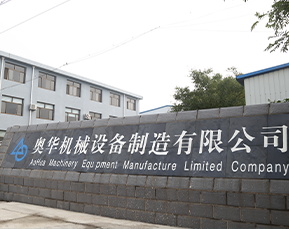 Afrikaans
Afrikaans  Albanian
Albanian  Amharic
Amharic  Arabic
Arabic  Armenian
Armenian  Azerbaijani
Azerbaijani  Basque
Basque  Belarusian
Belarusian  Bengali
Bengali  Bosnian
Bosnian  Bulgarian
Bulgarian  Catalan
Catalan  Cebuano
Cebuano  Corsican
Corsican  Croatian
Croatian  Czech
Czech  Danish
Danish  Dutch
Dutch  English
English  Esperanto
Esperanto  Estonian
Estonian  Finnish
Finnish  French
French  Frisian
Frisian  Galician
Galician  Georgian
Georgian  German
German  Greek
Greek  Gujarati
Gujarati  Haitian Creole
Haitian Creole  hausa
hausa  hawaiian
hawaiian  Hebrew
Hebrew  Hindi
Hindi  Miao
Miao  Hungarian
Hungarian  Icelandic
Icelandic  igbo
igbo  Indonesian
Indonesian  irish
irish  Italian
Italian  Japanese
Japanese  Javanese
Javanese  Kannada
Kannada  kazakh
kazakh  Khmer
Khmer  Rwandese
Rwandese  Korean
Korean  Kurdish
Kurdish  Kyrgyz
Kyrgyz  Lao
Lao  Latin
Latin  Latvian
Latvian  Lithuanian
Lithuanian  Luxembourgish
Luxembourgish  Macedonian
Macedonian  Malgashi
Malgashi  Malay
Malay  Malayalam
Malayalam  Maltese
Maltese  Maori
Maori  Marathi
Marathi  Mongolian
Mongolian  Myanmar
Myanmar  Nepali
Nepali  Norwegian
Norwegian  Norwegian
Norwegian  Occitan
Occitan  Pashto
Pashto  Persian
Persian  Polish
Polish  Portuguese
Portuguese  Punjabi
Punjabi  Romanian
Romanian  Russian
Russian  Samoan
Samoan  Scottish Gaelic
Scottish Gaelic  Serbian
Serbian  Sesotho
Sesotho  Shona
Shona  Sindhi
Sindhi  Sinhala
Sinhala  Slovak
Slovak  Slovenian
Slovenian  Somali
Somali  Spanish
Spanish  Sundanese
Sundanese  Swahili
Swahili  Swedish
Swedish  Tagalog
Tagalog  Tajik
Tajik  Tamil
Tamil  Tatar
Tatar  Telugu
Telugu  Thai
Thai  Turkish
Turkish  Turkmen
Turkmen  Ukrainian
Ukrainian  Urdu
Urdu  Uighur
Uighur  Uzbek
Uzbek  Vietnamese
Vietnamese  Welsh
Welsh  Bantu
Bantu  Yiddish
Yiddish  Yoruba
Yoruba  Zulu
Zulu Understanding the Functionality and Importance of Non-Drive Pulleys in Mechanical Systems
Understanding Non-Drive Pulleys
In the world of mechanical systems and machinery, the use of pulleys is fundamental for the transmission of power and the transition of motion. Among the various types of pulleys, non-drive pulleys play a pivotal role that is often overlooked. Understanding their function, application, and importance can enhance our comprehension of mechanical engineering and design.
What is a Non-Drive Pulley?
A non-drive pulley, also known as a free or idle pulley, is a component that does not transmit power from the motor to the load. Instead, it serves various supportive roles, including guiding and redirecting the motion of a belt or cable within a system. These pulleys are essential for creating a more efficient pathway for force transmission in mechanical setups, allowing for smooth operations in factories, vehicles, and other machinery.
The Function of Non-Drive Pulleys
1. Guiding and Redirecting Motion Non-drive pulleys can change the direction of the force applied by a belt or cable. This ability is crucial for systems where space constraints prevent a direct path from the power source to the load. By employing a non-drive pulley, engineers can maneuver the orientation of a system without compromising its efficiency.
2. Tension Regulation Non-drive pulleys help maintain the appropriate tension in belts and cables. This relationship is vital in preventing slippage or excessive wear, which can lead to mechanical failure. By ensuring that tension is evenly distributed across the belt or cable, non-drive pulleys contribute to the longevity and reliability of the system.
3. Load Distribution In some setups, a non-drive pulley can assist in distributing the load more evenly across different components of a machinery system. This distribution is essential to prevent overloading any single part, which can mitigate wear and improve overall machine performance.
Applications of Non-Drive Pulleys
non drive pulley

Non-drive pulleys are versatile components found in a wide range of applications. Their utility extends across various industries, including
- Manufacturing In conveyor systems, non-drive pulleys are integral to guiding materials along the belt, ensuring a smooth operation that minimizes disruptions in production workflows.
- Automotive Engineering Vehicles utilize non-drive pulleys in various systems, including power steering and air conditioning. These pulleys help to efficiently redirect power from the engine to auxiliary components.
- Elevators and Cranes Non-drive pulleys are utilized in lifting mechanisms to change the direction of ropes or cables, allowing for precise control over heavy loads.
Advantages of Non-Drive Pulleys
The advantages of incorporating non-drive pulleys into mechanical systems are manifold. Primarily, they enhance the overall efficiency of a machine by reducing friction and allowing for smoother transitions of motion. Secondarily, they can decrease the amount of energy required to operate a system, lowering operational costs and contributing to environmental sustainability.
Moreover, the design of non-drive pulleys can be customized to suit specific requirements, making them adaptable to various applications. Whether it’s a small-scale project or a large industrial system, non-drive pulleys provide the flexibility needed in modern engineering.
Conclusion
In conclusion, while non-drive pulleys may not be the primary source of power transmission, their importance in the functionality and efficiency of mechanical systems cannot be underestimated. By guiding motion, regulating tension, and distributing loads, these pulleys significantly enhance the performance and reliability of machinery across numerous applications. As technology advances and systems become more complex, the role of non-drive pulleys will continue to evolve, making them a vital component in the design and operation of efficient mechanical systems.
-
Revolutionizing Conveyor Reliability with Advanced Rubber Lagging PulleysNewsJul.22,2025
-
Powering Precision and Durability with Expert Manufacturers of Conveyor ComponentsNewsJul.22,2025
-
Optimizing Conveyor Systems with Advanced Conveyor AccessoriesNewsJul.22,2025
-
Maximize Conveyor Efficiency with Quality Conveyor Idler PulleysNewsJul.22,2025
-
Future-Proof Your Conveyor System with High-Performance Polyurethane RollerNewsJul.22,2025
-
Driving Efficiency Forward with Quality Idlers and RollersNewsJul.22,2025





























